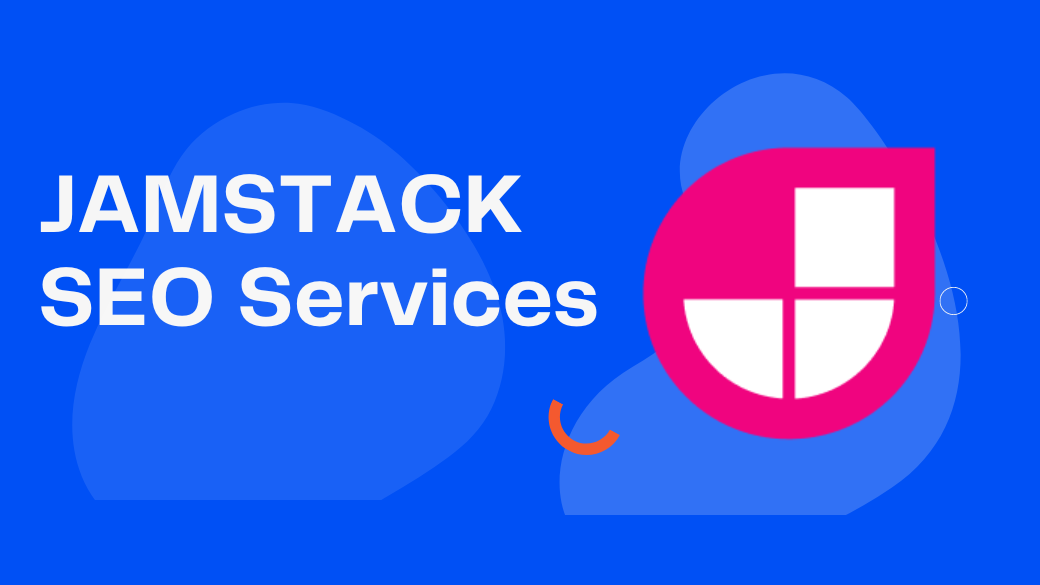JAMStack SEO is the technique of optimizing for search engines a website developed with the Jamstack architecture. Jamstack is a new web development architecture that creates static web pages with JavaScript, APIs, and Markup. This makes Jamstack websites extremely quick and secure, and it also provides some SEO benefits.
Here are some of the benefits of Jamstack SEO:
- Fast Loading Times: Static websites load quickly, which is important for search engine rankings. Search engines always love quick loading websites.
- Better Security: Websites built with Jamstack are less vulnerable to attacks than standard websites built with server-side rendering.
- Easy to Index: Search engines can easily index static websites, which means that your pages will be more likely to show up in search results.
- Improved User Experience. Faster loading times and improved security can result in a better user experience, which can aid in SEO.
Here Are Some Tips for Jamstack SEO:
Use the Right Tools: There are several tools available to assist you with Jamstack SEO. These tools can assist you with tasks such as creating sitemaps, improving metadata, and tracking your SEO success with Google Search Console and Google Analytics.
Create High-Quality Content: High-quality content is still the most critical aspect of SEO. Make certain that your material is well-written, original, informative, and relevant to your target audience.
Use Proper SEO Techniques: You can employ a variety of SEO tactics to boost the ranking of your Jamstack website in search results. These methods include employing the appropriate keywords, optimizing your titles and descriptions, and constructing backlinks.
JAMstack SEO Guide: Optimize Your Website for Search Engines
In this comprehensive guide, we will explore how to optimize JAMstack websites for search engines to improve visibility, increase organic traffic, and enhance overall search engine rankings. The JAMstack architecture, which stands for JavaScript, APIs, and Markup, offers incredible performance and security benefits, but it requires special attention to ensure proper SEO.
Understanding JAMstack and SEO Synergy
- Introduction to JAMstack and its core components: JavaScript, APIs, and Markup
- Explanation of the importance of SEO for JAMstack websites.
- Understanding the challenges and opportunities for SEO in a JAMstack environment
Preparing Your Website for SEO Success
- Choosing the right static site generator (SSG) and hosting solution for optimal SEO performance.
- Implementing best practices for code optimization to ensure fast page loading and smooth user experience.
- Ensuring mobile responsiveness and fast-loading pages for better user experience and SEO.
Leveraging Dynamic Data with APIs
- Utilizing APIs to fetch data dynamically while maintaining a static website structure.
- Strategies for handling SEO for dynamic content, such as blog posts and user-generated content.
- Tips for optimizing JSON-LD structured data to enhance search engine understanding of your content.
Crafting SEO-Friendly Content
- Creating valuable and relevant content that aligns with user search intent.
- Optimizing title tags, meta descriptions, and URLs for maximum click-through rates.
- Incorporating relevant keywords strategically without compromising content quality.
- On-page SEO optimization techniques, including keyword research and proper usage, meta tags, and URL structures.
Managing Metadata and Sitemaps
- Metadata management best practices for your JAMstack website.
- Producing XML sitemaps to aid in search engine crawling and indexing.
- Using canonical URLs to avoid duplicate content concerns.
Website Performance and SEO
- The important link between website speed, user experience, and SEO rankings.
- Techniques for improving website performance by optimizing pictures, scripts, and other elements.
- To improve speed, use content delivery networks (CDNs) and caching methods.
Monitoring and Analyzing SEO Efforts
- Configuring Google Analytics, Google Search Console, and other tracking tools to track website performance and user behavior.
- Making informed judgments based on SEO data and identifying areas for improvement.
- Conducting frequent SEO audits in order to keep ahead of any difficulties and maintain peak performance.
Conclusion:
Your website will be better suited to generate organic traffic, enhance the user experience, and achieve higher search engine results if you follow the principles and practices indicated in this Jamstack SEO tutorial. Embracing the JAMstack architecture while addressing SEO will enable you to realize your website’s full potential on the current web.

